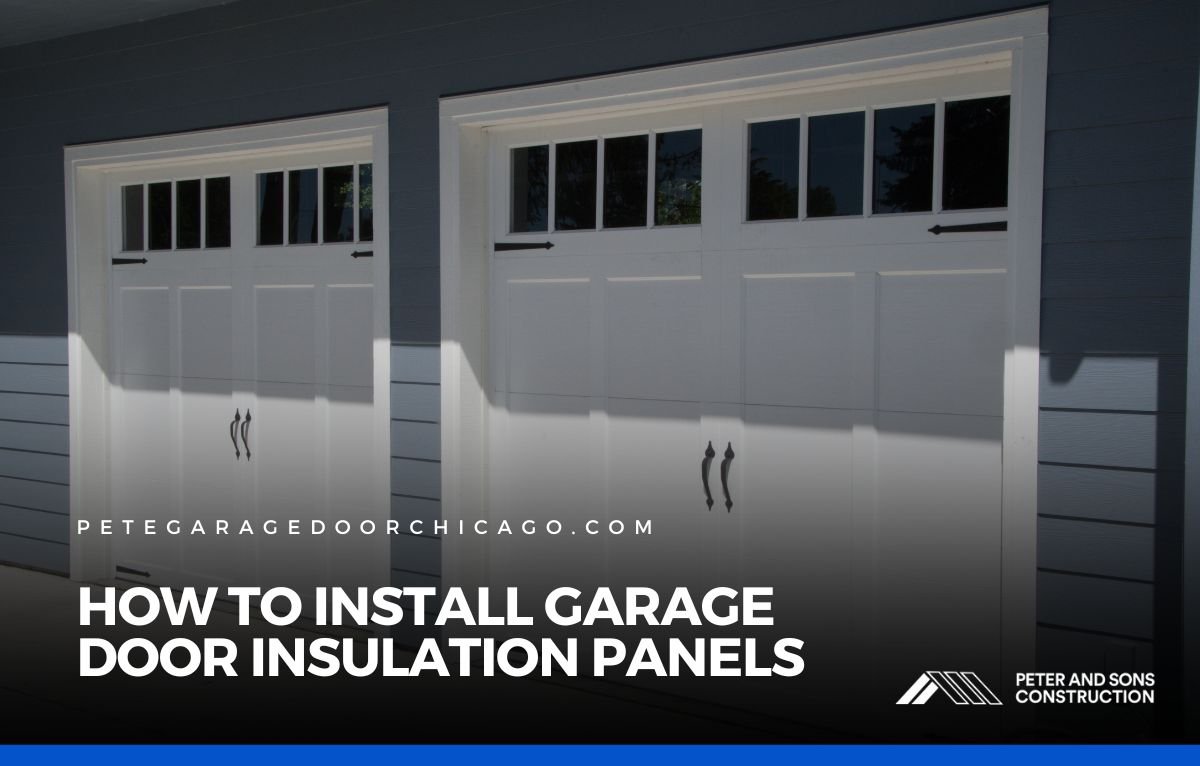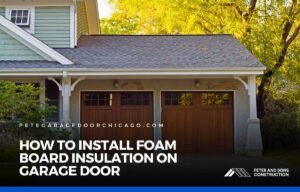Installing Insulation Panels the Right Way
- Editorial Team
- September 28, 2025
- 9:17 pm

Even after sealing the sides and top of your garage door, the temperature might still feel off. That’s often because the panels themselves are letting heat escape or absorb too much from the sun. Most garage doors are made of metal, which easily conducts heat and cold—turning the space into an icebox in winter or a heat trap in summer. To fix that, you need to insulate the door itself. Installing garage door insulation panels gives the entire surface a barrier, helping your garage stay more comfortable all year round.
Why Panel Insulation Makes a Big Impact
Garage doors are usually made from steel, aluminum, or fiberglass—all excellent conductors of heat and cold. Even when the seals are tight and the gaps are closed, those materials work against you. Heat escapes easily in winter, and in the summer, the sun’s rays heat the panels like a skillet.
That’s where insulation panels come in. They’re lightweight, cut to size, and designed to slow heat transfer. The right install can reduce your garage’s temperature swings by 10–20°F, making it more usable year-round.
What You’ll Need
Insulating a garage door doesn’t require fancy tools. Most of what you need is available at your local hardware store, or comes bundled in a quality insulation kit.
- Garage door insulation panels (foam board or reflective foil-backed)
- Measuring tape
- Straightedge or level
- Utility knife or shears
- Double-sided tape or adhesive clips
- Degreaser or all-purpose cleaner
- Rag or towel
Optional:
- Aluminum foil tape for sealing edges
- Gloves (to avoid skin irritation from some insulation materials)
Step-by-Step: How to Install Garage Door Insulation Panels
- Measure the Panels
Every garage door panel has a recessed section that varies slightly in size. You don’t want insulation sticking out or bulging. Use your measuring tape to note the width and height of the inset area, not the outer frame.
Take measurements twice for accuracy, especially if the door is older and panels aren’t identical. If you’re using a pre-cut kit, double-check dimensions before trimming.
- Clean the Panel Surfaces
Before sticking anything on the door, clean each panel’s surface thoroughly. Dust, oil, and residue from previous weather changes can affect adhesion. Use a degreaser or a mild soapy solution. Wipe it dry with a clean towel. This step ensures that the insulation stays put for the long haul.
- Cut the Insulation Panels to Fit
Using a straightedge and utility knife (or shears), trim the insulation panels to match your measurements. Aim for a snug fit that slides into the recess without being forced. If you’re using foil-backed panels, make sure the reflective side is facing the direction recommended by the manufacturer—usually outward to reflect heat.
Don’t worry if your cuts aren’t laser-perfect. Small gaps can be sealed with aluminum foil tape later.
- Attach the Panels Securely
There are two common ways to fix insulation panels in place:
- Double-sided tape: Apply strips around the back of the insulation panel. Press it firmly into place, starting from one edge and working across.
- Clips (included in some kits): These attach directly to the panel and allow the insulation to flex slightly with door movement. They tend to hold up better in humid environments.
Tip: Start at the top panel and work your way down. This keeps weight distribution even as you go.
- Seal the Edges (Optional, But Helpful)
If there’s space between the panel and insulation, use foil tape to seal the edges. This adds a layer of air resistance and makes the install look cleaner. Be careful not to block any moving hinges or hardware with tape or insulation material.
- Test Door Movement and Balance
After installing all the panels, test the garage door. Open and close it manually a few times. Listen for dragging, resistance, or uneven weight. Insulation adds a bit of mass to the door, and while it’s usually minimal, older openers might struggle.
If the door feels heavier or misaligned, you may need to adjust the tension springs—best handled by a garage professional for safety.
What to Expect After Installation
Done right, insulation panels make an immediate difference. You’ll feel the temperature stabilize within a day, especially in attached garages. In winter, the space holds warmth longer. In summer, it won’t trap heat as quickly.
The added insulation also dampens sound. That means less road noise creeping in and quieter operation overall. If your garage doubles as a workspace or laundry area, that boost in comfort and quiet goes a long way.
Mistakes to Avoid
- Skipping surface prep: Panels won’t stick to dirty or oily doors.
- Forcing oversized panels: Bulges may interfere with opening or loosen the adhesive over time.
- Blocking moving parts: Keep insulation away from springs, hinges, and track systems.
- Using interior-only materials: Garage doors need materials rated for extreme temperatures and humidity shifts.
Warning Signs You Need a Garage Door Specialist
Some garage doors have irregular panels, curved designs, or pre-installed hardware that makes insulation tricky. If your panels don’t sit flush, or if you’re unsure about the door’s weight after installation, it’s safer to get help.
A garage specialist can assess insulation compatibility and make adjustments that preserve your opener’s performance. They’ll also make sure the insulation aligns with the door’s movement so nothing shifts or tears after repeated use.
Final Thoughts
Installing garage door insulation panels is one of the most cost-effective upgrades you can make. It improves comfort, saves energy, and adds durability to a space you use daily. If you’ve already sealed the edges and the temperature still fluctuates wildly, it’s time to give the panels the attention they deserve.
And if you want a clean, balanced, and efficient finish without trial and error—Peter and Sons is always ready to help.



